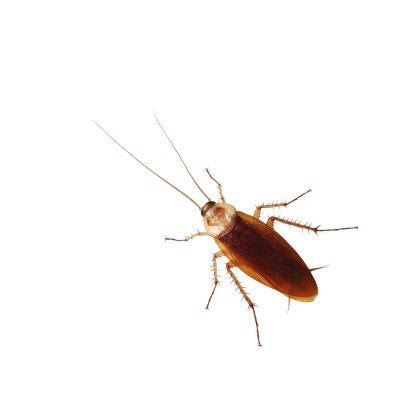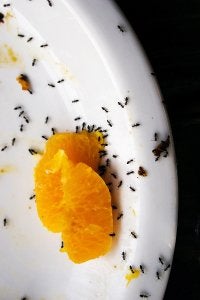-
Common Tree Diseases in Northern California
The health and appearance of your yard plays an integral part in the overall curb appeal of your property. If any of your trees are in poor health, the aesthetic appeal of your home is at stake. The first step in reviving your trees is to determine the cause of your trees’ unhealthy appearance. Schedule a tree disease diagnosis in San Jose to determine if your trees are afflicted with one of these common Northern California tree diseases.

Anthracnose
This is one of the most common tree diseases in the region. Anthracnose is a fungal disease that affects hardwood trees. If the leaves on your trees are developing brown or black splotches that resemble scorch marks, contact a tree disease treatment company and ask them about treatment options for anthracnose.Crow Rot
Crow rot is a disease caused by soil-borne fungus. It typically affects garden plants and shrubs, but it can also spread to trees. Rotted areas on tree branches and on the trunk near the roots are signs of crow rot. Your San Jose tree disease treatment provider will spray or inject fungicide into the truck, branches, or soil to treat crow rot.Aspen Canker
There are a number of types of fungi that can infect aspen trees and cause aspen canker. Canker diseases cause sunken oval areas on the bark in the early stages. Late stage aspen canker causes areas of crumbling bark. The sooner your tree disease treatment provider starts treating aspen canker, the better the chances of saving the affected trees.Dutch Elm Disease
If you notice yellow or brown foliage and dark brown or black streaks on the wood just under the bark, your tree may be suffering from Dutch elm disease. Because Dutch elm disease is often confused with damage caused by an elm leaf beetle infestation, it’s important that you schedule a tree disease diagnosis to properly identify the cause of your tree’s appearance. -
Tips for Mouse-Proofing Your House
The first step in mouse-proofing your home is to perform a thorough inspection around your property and locate any entry points that mice could use to sneak into your home. Look for small openings around exhaust pipes, plumbing, and air conditioning equipment. Mice can squeeze through entry points that are no bigger than 1/4 th of an inch wide. Use caulking, weather stripping, or hardware cloth to seal up these entry points and keep mice at bay. Watch this video for more mouse-proofing tips.
Even with all the best prevention methods in the world, mice and other rodents can still find their way into your home. If you believe rodents are making themselves at home, contact a pest control provider in San Jose, CA to develop an effective strategy for dealing with rats, mice, and other types of rodents.
-
How Cockroaches Can Affect Your Health
Cockroaches are unsightly and embarrassing, and they can even affect your health. Although roaches themselves don’t cause any adverse health effects, they are carriers for millions of bacteria and infectious agents that can lead to an array of diseases, some of which can be life threatening if left untreated. If you have a cockroach infestation in your home, contact a residential pest control company in San Jose to protect yourself and your family from these roach-related health problems.

Asthma
If you or someone in your family suffers from asthma attacks, cockroaches should be dealt with immediately. Cockroach allergens can cause severe complications and can even be life-threatening for asthmatics. Even if you don’t have asthma, you may develop cockroach asthma by inhaling cockroach allergens. Contact your Pleasanton pest control provider to rid your home of cockroaches and breathe easier.Allergies
The cockroach allergens that can cause asthma attacks can also trigger undesirable asthma symptoms. Their saliva secretion and body parts contain hundreds of allergens that can lead to reactions ranging from skin rashes and watery eyes to breathing difficulties. If you’ve noticed an increase in indoor allergy symptoms recently, contact your pest control company and have them inspect your home for cockroaches.Food Poisoning
While crawling around at night, cockroaches contaminate open food by defecating on it, leaving behind hair and dead skin, and by depositing empty egg shells. Cockroaches are a known carrier of the bacterium Salmonella, which can cause typhoid and severe food poisoning. Keep your house clean and put away any food at night to prevent cockroach contamination, and be sure to contact your San Jose exterminator about treating your cockroach problem. -
Getting Rid of Mice in Your House
Getting Rid of Mice in Your House

Having mice in your home can be a serious problem. If you would rather deal with the problem yourself than call an exterminator or residential pest control service in Pleasanton , there are a few methods you can use. Watch this video for tips on getting rid of mice in your house.
A common practice in ridding your house of mice is setting mousetraps. If you have seen mice in certain areas, those should be the first to be targeted. Entice them with chocolate or peanut butter, and set them liberally. After a while, rearrange your furniture and set new traps in different areas. Make sure that doors leading to the outside of your house have sweeps to prevent access by mice.
If you cannot get rid of mice using strategically placed mousetraps, talk to a pest treatment and removal service to make sure that you deal with your mouse problem efficiently.
Media Summary
-
Top Reasons for an Ant Infestation
Top Reasons for an Ant Infestation
Ants are common pests, and they do a good job of keeping Pleasanton residential pest and rodent control employees at work. There are a few factors that may lead you to enlisting the help of a commercial or residential pest exterminator. Keep reading to take a look at the top reasons for an ant infestation.
Food

It is no secret that spare food can lead to an ant problem; ants are known for their ability to ruin a good picnic. When there is food to be consumed, ants make it their mission to find and consume the free meal. If you are not always motivated to take out the trash, consider the heaping pile of reward that that looks like to a colony of ants. These pests are particularly attracted to sugar foods, so be sure to clean up your snacks when you are done with them. Make sure your refrigerator and cabinets are all sealed properly so that ants cannot make their way in.
Ideal Habitat
Like most pests, ants gravitate towards very specific environments. If they find an area that has appropriate amounts of moisture, shelter, and food, then they will do their best to make themselves at home. Make your home as unwelcoming as possible to ants. Use a dehumidifier and clean up spills immediately, and make sure that you look after your food. Take your garbage out regularly and call an exterminator or pest control specialist at the first sign of infestation.
Access
Ants tend to follow the path of least resistance. If you provide them with easy access to a building, they will graciously accept the invitation. Make sure that any vegetation outside of your house or building is not doubling as shelter and an access point for ants. Seal your doors, windows, and any other gaps.
If you are worried about an ant infestation, make sure that your home is not suitable for the pests. Do not leave food around, control moisture, and prevent ants from easily accessing your home or building. Call a commercial or residential pest treatment specialist if you sense an infestation.
-
How to Tell If You Have Fleas in Your House
How to Tell If You Have Fleas in Your House
Residential pest control in Pleasanton is not only important when it comes to humans; fleas will continually harass their furry counterparts. The removal of these pests is only possible, however, once you are aware that you have them. Here is a look at how to tell if you have fleas in your house.
Pet Bedding
If you suspect that you may have fleas, take a look at your pet’s bedding before calling up your residential pest treatment specialist. These pests are only a fraction of an inch large and are typically black or brown. Make sure you inspect your pet’s bedding thoroughly, lifting up any cushions or fabric seems. You should also be on the lookout for flea eggs, which are even smaller than fleas and may resemble salt and pepper. If you have fleas in your house, there is a good chance you will find evidence in the pet bedding; since they do not have wings, fleas can only travel crawling and hopping distance.
General Carpeting
You or your exterminator may find fleas in your carpeting. Fleas can be very difficult to detect due to their small size and their ability to blend in with the colors and fibers of carpets. You can find out if you have fleas by placing a bowl of soapy water and a lamp on your carpet; if you return to a bowl full of dead fleas, it is time to call your pest treatment expert.
Pet Fur

Fleas are a nuisance for your pets, and they will react accordingly. If you notice your pets scratching at their fur or skin more often than usual, this may be due to fleas. Look through the fur to see if you notice any flea feces, flea bites, or fleas themselves. If you find any evidence of flea activity, talk to your exterminator about solutions.
If you have fleas in your home, they may be hiding in several locations. Check your pet’s bedding or area where they typically sleep, the carpeting in your home, and your pets’ fur and skin themselves. Schedule a visit from your exterminator if you suspect that you have fleas.
RECENT POSTS
categories
- Uncategorized
- Weed Control
- Lawn Treatment
- Pest Control
- Performance Pest Management
- infographic
- Spider treatment
- Pest Management
- Commercial Pest Exterminator
- Residential Pest Exterminator
- Mice
- Tree Diseases
- tree disease treatment
- cockroaches
- Flea
- Fleas
- Ants
- Ant Infestation
- Bed Bugs
- Wasps
- Bees
- Stinging Insects
- Household Spiders
- Insects
- Tractor Mowing
- Earwigs
- Northern California
- Commercial Property
- Sow bugs
- Infestation
- Bugs Live
- DIY Pest Control
- Spider Silk
